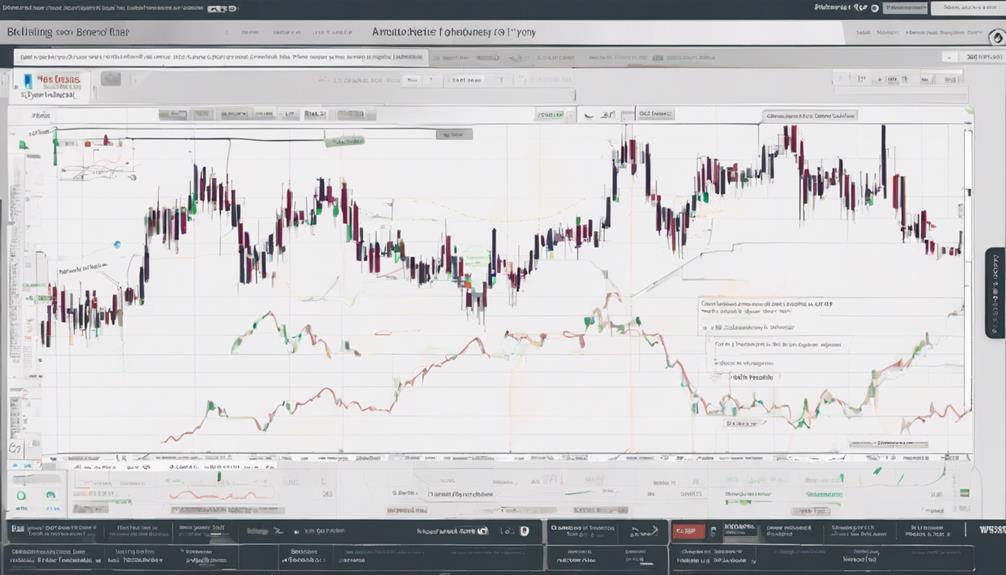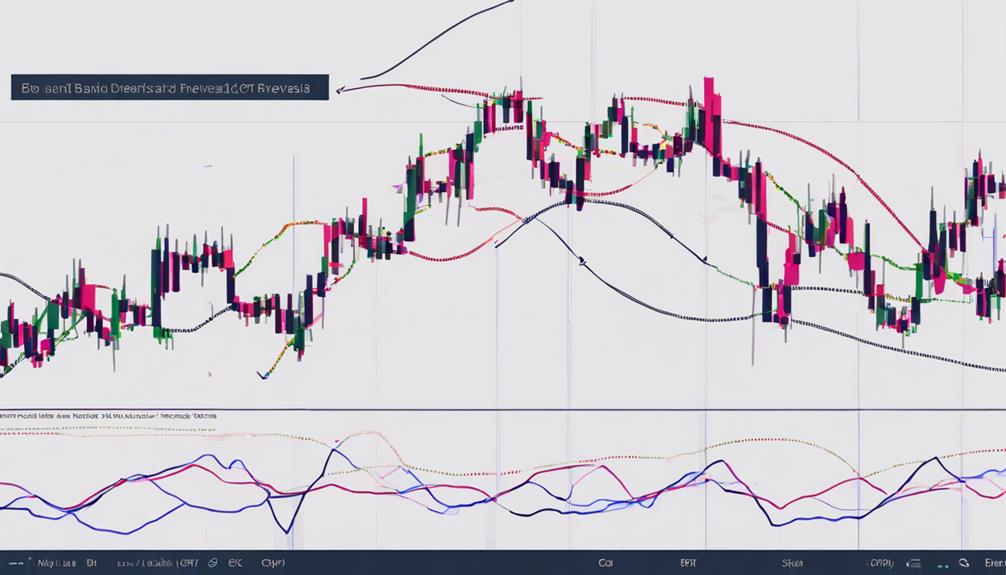As you delve into the realm of Bollinger Bands, you'll uncover three key insights that could potentially transform your trading approach.
These insights offer a deeper understanding of how to harness the power of this versatile tool for more informed decision-making in the dynamic world of financial markets.
By exploring the nuances of Bollinger Bands, you'll gain valuable perspectives on enhancing your trading strategies and navigating market fluctuations with greater precision.
Stay tuned to discover how these insights can elevate your trading game to the next level.
Key Components of Bollinger Bands
Understanding the key components of Bollinger Bands is essential for effectively utilizing this technical analysis tool in trading strategies. Bollinger Bands consist of three main parts:
- The Middle Band, which is a 20-day Simple Moving Average (SMA).
- The Upper Band, calculated by adding 2 standard deviations to the SMA.
- The Lower Band, calculated by subtracting 2 standard deviations from the SMA.
These bands play a crucial role in identifying market volatility, trend direction, and potential overbought or oversold conditions. Traders use the Upper Band to spot overbought situations and the Lower Band to identify oversold conditions. The Middle Band acts as a guide for trend direction, with price movements often gravitating towards it during stable market conditions.
Volatility Analysis With Bollinger Bands

Analyzing volatility with Bollinger Bands provides traders with vital insights into market dynamics and potential price movements. High volatility is indicated by widening Bollinger Bands, reflecting increased price fluctuations, while narrowing bands suggest low volatility and the possibility of upcoming price breakouts.
Traders utilize Bollinger Bands to adapt their risk management strategies in response to changing market volatility levels. Squeeze patterns within Bollinger Bands signal potential explosive price movements resulting from decreased volatility. Monitoring the Bollinger Band width enables traders to assess market volatility levels accurately, aiding in making well-informed trading decisions.
Understanding these volatility dynamics through Bollinger Bands is crucial for effective risk management and capitalizing on trading opportunities.
Can You Provide More Insights Into Bollinger Bands?
Bollinger Bands are a popular tool used in technical analysis for understanding price volatility. The understanding Bollinger Bands explanation involves using a simple moving average and two standard deviations to create upper and lower bands around the price. These bands help traders identify potential overbought or oversold conditions in the market.
Can You Provide More In-Depth Insights Into Bollinger Bands?
Certainly! Understanding Bollinger Bands Explained. Bollinger Bands are a popular technical analysis tool used to determine price volatility and potential price breakouts. They consist of a simple moving average line and two standard deviation bands. When the bands widen, it signifies higher volatility, and when they narrow, it indicates lower volatility.
Effective Trading Strategies With Bollinger Bands

Utilizing Bollinger Bands effectively in trading strategies enhances decision-making by providing valuable insights into market trends and volatility. When integrating Bollinger Bands into your trading approach, consider the following strategies:
- Combine with RSI: Incorporating the Relative Strength Index (RSI) with Bollinger Bands can offer more precise signals for entry and exit points.
- Capitalize on Short-Term Trades: Utilize Bollinger Bands to take advantage of price volatility and market movements, particularly in short-term trading scenarios.
- Confirm Breakout Signals: Wait for multiple candle closes above or below the bands to validate breakout signals, increasing the reliability of your trading decisions.
Frequently Asked Questions
What Is the Best Indicator With Bollinger Bands?
The best indicator to use with Bollinger Bands is the Relative Strength Index (RSI). RSI confirms overbought or oversold conditions, enhancing trading decisions. RSI readings above 70 signal overbought levels, while below 30 indicate oversold conditions.
What Is the Most Accurate Setting for Bollinger Bands?
For the most accurate Bollinger Bands, consider a 20-period SMA with 2 standard deviations. Adjusting the standard deviation can impact band width and signal strength. Experiment with SMA lengths and deviations to align with your trading style and preferences.
What Timeframe Is Best for Bollinger Bands?
For optimal Bollinger Bands performance, the 20-period setting on a 1-hour chart is typically best. Shorter timeframes like 5-minute charts offer more signals but lower reliability, while daily charts give stronger signals but fewer trade opportunities.
How Do You Analyse Bollinger Bands?
To analyze Bollinger Bands, observe price movements relative to the bands. Breakouts outside the bands signal potential trading opportunities. Watch for overbought/oversold conditions when prices touch or breach bands. Identify trends, support/resistance levels for informed decisions.
Conclusion
You've now uncovered the power of Bollinger Bands in your trading arsenal.
Did you know that a study by the CMT Association found that using Bollinger Bands in conjunction with other technical indicators led to a 75% increase in trading accuracy?
By mastering the components, analyzing volatility, and implementing effective strategies, you can maximize your trading performance and gain an edge in the market.
Keep exploring and refining your Bollinger Bands techniques for continued success.


